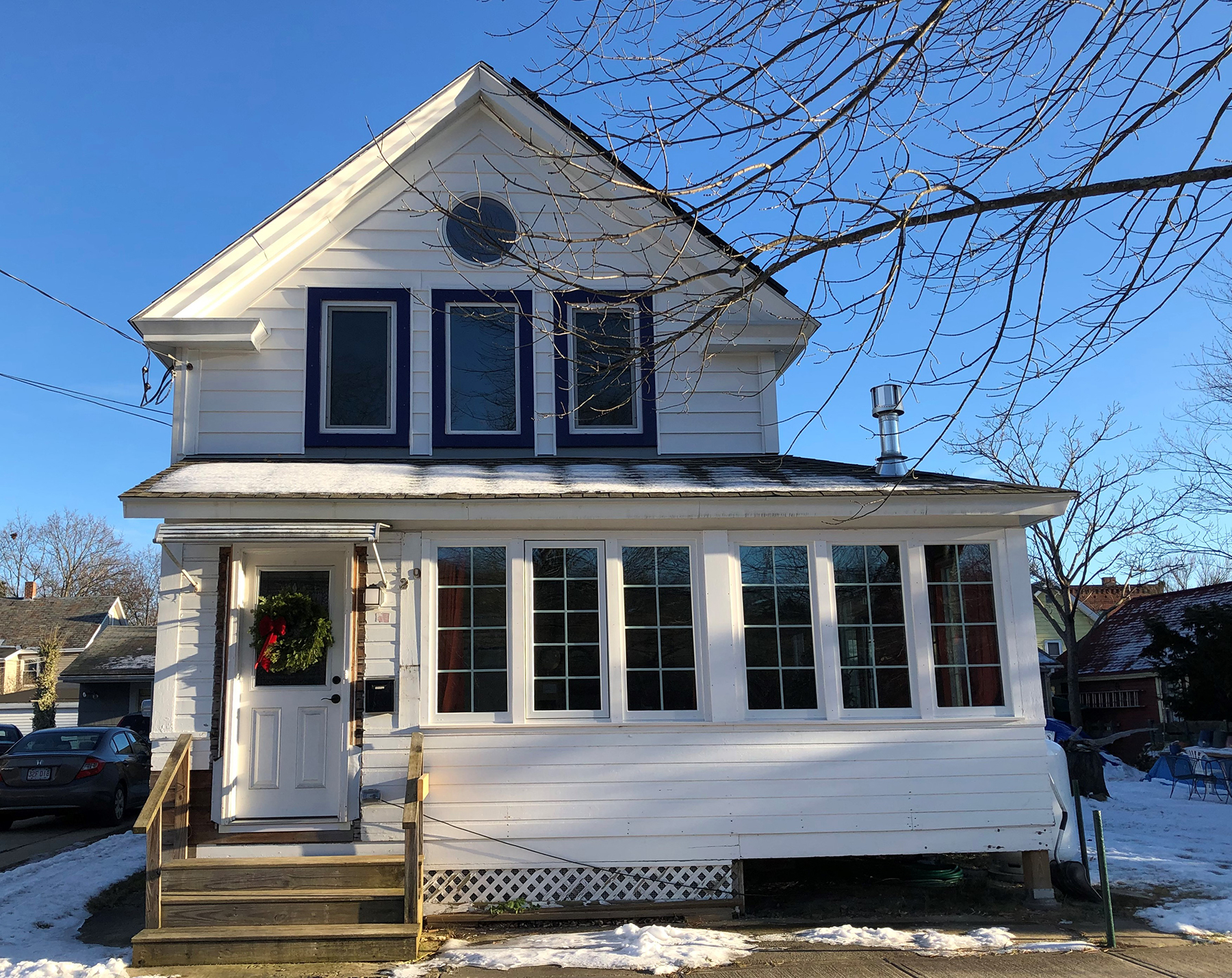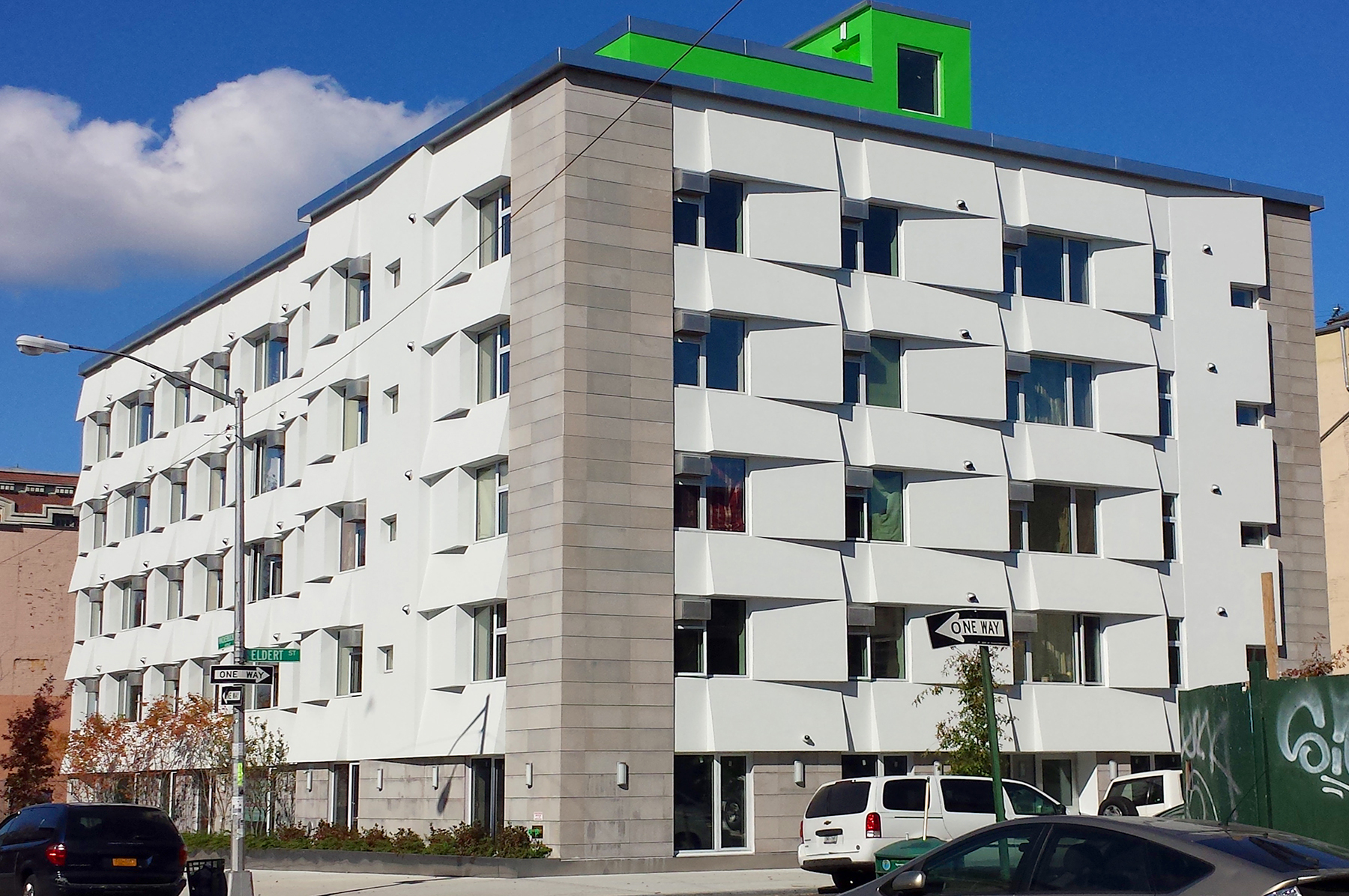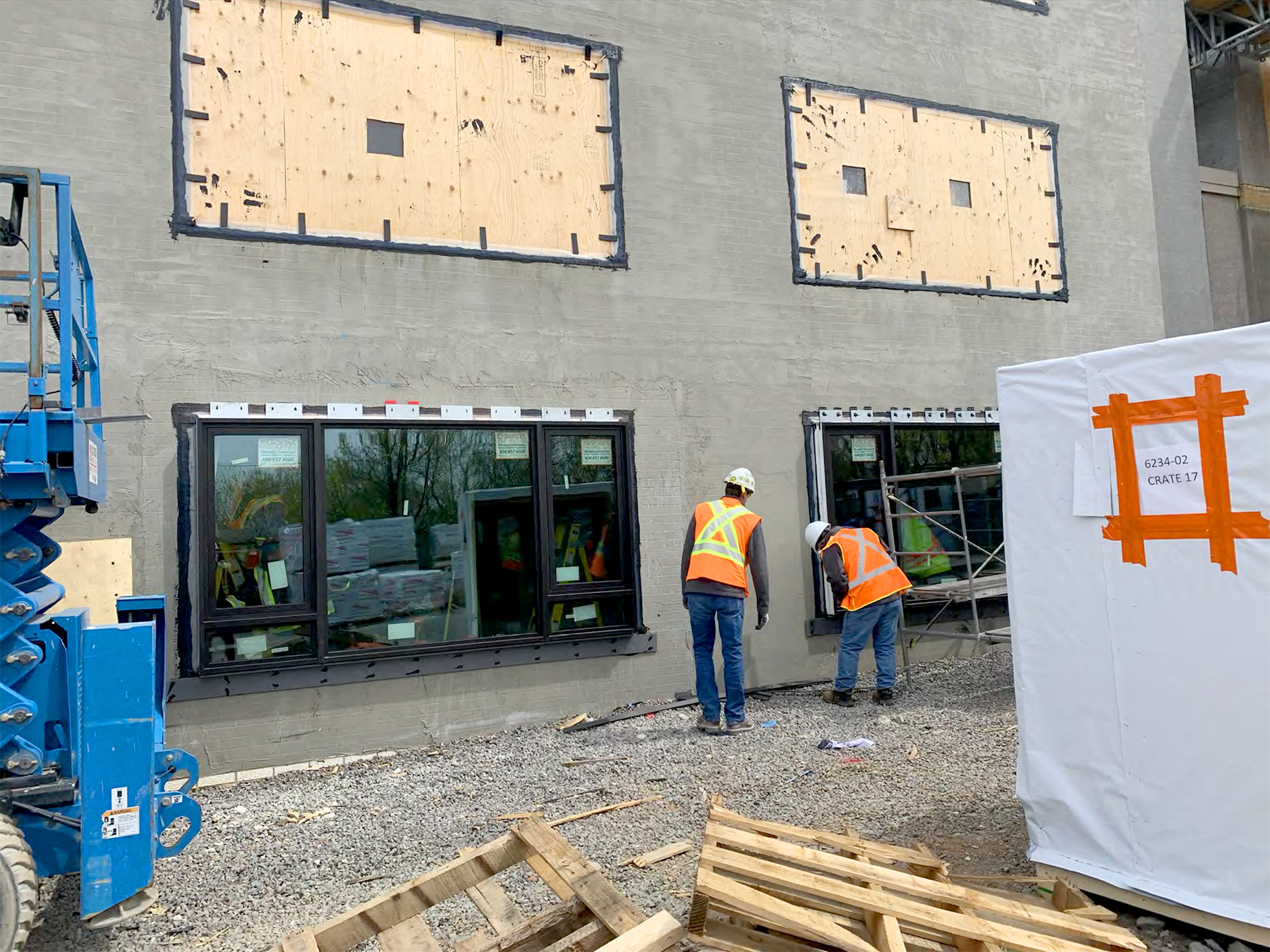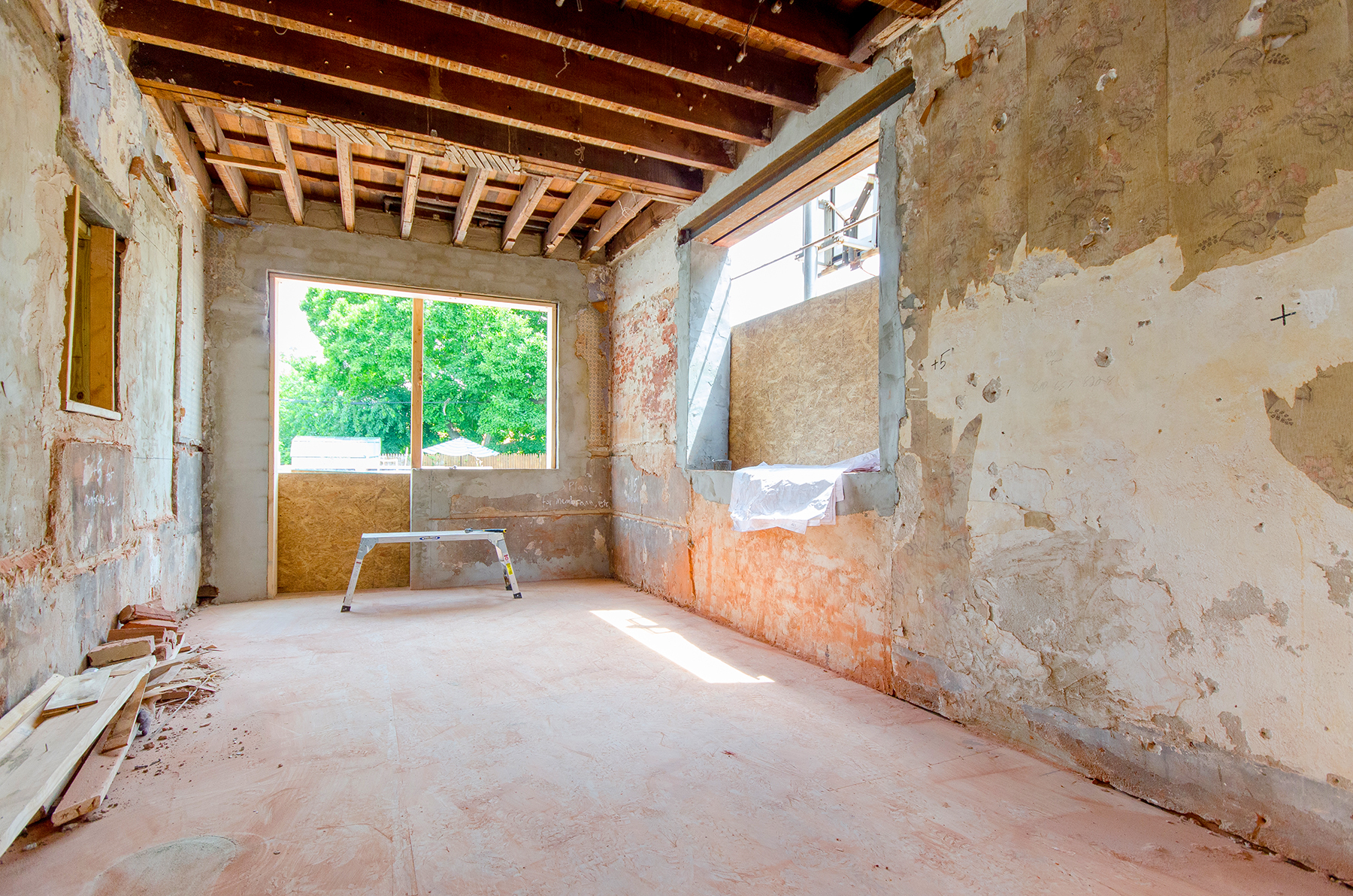How Will We Electrify Existing Buildings?
Some construction professionals have skipped the theory and gone straight to implementation.

Building retrofit is a key challenge for electrification. It appears that the new U.S. administration will place more emphasis on addressing our climate crisis, including supporting local governments seeking decarbonized buildings.
Retrofits to existing buildings can make a huge impact on emissions, but they are among the most formidable of the challenges we face, both technically and economically. The Rocky Mountain Institute says about 70 million buildings in the United States burn fossil fuels for heating and cooking. To meet our Paris climate agreement commitments, about five million buildings each year need to be at or near-zero emissions.
This column provides some detail on retrofit projects involving multiunit residential structures in New York and Toronto, as well as deep energy upgrades to small detached homes in Philadelphia and Turners Falls, Mass.
Retrofits are a significant opportunity for engineers and HVAC professionals in North America. During a podcast interview in 2020, Saul Griffith — renowned inventor and co-founder of Rewiring America with a doctorate in mechanical engineering from MIT — said decarbonizing the country will create 25 million jobs. He thinks it’s technically and economically possible, partly because of the efficiencies of electrified vehicles and building systems.
“If we electrify everything, we’ll only need 40 to 50 percent of the energy we currently use to do all the things that we do today,” he says. “And we can produce all that energy cleanly, domestically in America.”

New York Multiunit Retrofit
It all sounds wonderful. However, if you’re a construction veteran in New York, you might be having difficulty imagining such a wholesale overhaul. There’s hardly room for a crane, let alone retrofitting old buildings full of tenants and furniture.
A few years ago, New York City Mayor Michael Bloomberg realized big city buildings create 70 percent of emissions, and that by 2030, a high percentage of New York’s existing buildings will still be here. He created a task force on retrofit planning.
Chris Benedict, one of the first green building architects working in New York, sat on the task force. She explained to the other members that the most pragmatic approach for occupied existing buildings might be to fix the envelopes by insulating them on the outside. “It would be more expensive [to make substantive changes] inside and basically impossible with tenants,” Benedict notes.
A local regulation had to change, permitting up to 8 inches of additional exterior insulation and cladding without a floor-area penalty. Once it was done, teams of early adopters set about creating models for deep energy retrofits.
Last summer, Benedict started a nine-building project called Casa Pasiva in Bushwick. Her plan is to remove or seal the old interior pipe, radiators and ducts, and install small Daikin 9,000 BTU ductless split heads. They would be in different rooms in each apartment (average about 700 square feet) and wired to their outdoor units on the roof.
Also on the roof are RenewAire EV Premium energy-recovery ventilators, 80-230 CFM, with ECM motors. They’re surrounded by insulated housings with small ducts running down the outside of the buildings, into and out of each apartment.
This means heat recovery, plus healthy, 100-percent fresh, dedicated outdoor ventilation air. Benedict and numerous others mention that the pandemic has made everyone more conscious of indoor air quality, health, comfort and global problems such as climate change. Along with energy savings and tough municipal building emission standards in New York and other cities, the aforementioned concerns are driving a surge in demand for deep energy retrofits and decarbonized systems in new construction.
Numerous studies are now emerging showing that electrified buildings can save on energy, maintenance costs, avoided replacement costs (due to grants), business absenteeism, rent level penalties and resale penalties.
Once in place and tested, lines, ducts and ERVs at Casa Pasiva are all encapsulated inside a continuous foam-with-stucco insulation system called Sto EIFS. Because the exterior cladding is now quite thick, it opens up some possibilities for artistic architectural treatments. This was manifested in the attractive sculpted exterior look of one of Benedict’s earlier projects on Knickerbocker Ave. in Brooklyn.

At Casa Pasiva, the heavy insulation is accompanied by new windows, minimized perforations and other measures that help the structure meet the requirements of Passive House, one of the most demanding building standards. It results in significantly reduced electrified conditioning loads; the HVAC design also eliminates the sharing of heat, air or power between residential units.
“We have a good air barrier on the exterior of the building to meet Passive House and one between each apartment so that air, bugs, smoke and sound don’t move from one apartment to another,” Benedict explains.
Tenants use remotes to control the Daikin heads, which, by owner request, are modified using an Intensis electronic module inside to impose upper and lower temperature limits. Apartment devices are separately submetered, allowing tenants to learn about energy usage and incorporate conservation behaviors into daily living.
When writing about green buildings in recent years, I have not often covered gas cooking, but it is now receiving a lot more attention. The usual pushback from status quo interests was that electric or induction alternatives were rejected by professional chefs and citizen foodies.
In the past 12 months, this has changed quickly. More prominent chefs and ordinary homeowners are trying induction cooktops in particular and are happy with their cooking results, easy cleaning, indoor air quality, energy and greenhouse gas savings. Three of the electrification retrofit projects in this article include new induction cooktops.
“Every [Casa Pasiva] apartment had to get an electrical upgrade for induction,” Benedict says. “They needed a 220 outlet and more amps. We also provided a new set of pots and pans and a magnet for testing tenant’s older pans.”
Toronto Seniors’ Residence Electrification
The quest for a standard retrofit model for multiunit residential electrification is taking place all over Northern America right now. Solutions seem to have much in common, but differences as well, based on climate zones, local requirements and site conditions.
A great deal of grant money was allocated to a project in Hamilton, Ontario, Canada: an 18-story, 146-unit condemned and unoccupied seniors’ residence originally built in 1967.

A “retrofit” quickly became a complete asset renewal project when it was realized that every electrical conduit and plumbing riser would be replaced, moldy asbestos walls would be ripped out, there were holes in the firewalls, numerous broken fans and the corridor pressurizing was nearly 100 percent dysfunctional. Some door and window openings, balconies and other structural elements were also deteriorating.
Leveling the building was considered, but it would have cost $5 million for the demolition, while gutting and fixing would cost half as much as building new. The retrofit also was a better choice in terms of embedded carbon.
The grants came because the affordable housing community realized it would be a perfect learning project. There are thousands of buildings all over North America just like this one. They are often crumbling government-owned assets with mechanical equipment nearing the end of its useful life, and they must be revived under tight budgets.
The new version of the building uses central variable refrigerant flow heat pump air handlers located at the top and bottom of the structure, which reduces maximum pressure and provides some control options. Fresh air is ducted in through ERVs and can be boosted at the unit level using a supplementary coil.
Efforts to minimize perforations in the envelope include the use of Studor hybrid air admittance valves — positive air pressure attenuators — to allow air in without letting any escape.
The building envelope is highly insulated, with four inches of mineral wool added beneath new cladding on the exterior. The original plan was for six inches, but when the decision was made to remove all the drywall, a couple of inches were added on the inside instead.
Cascadia triple-pane Passive House-certified windows help control conditioning loads. New blinds will mitigate overheating, a common challenge for tight envelope projects. Balconies were replaced with Juliet-style to reduce thermal bridges.
“At first, the project’s primary innovation was a 94 percent carbon emissions reduction target,” notes Ya’el Santopinto, the lead project architect, from Toronto’s ERA Architects. “Now, seen through the lens of a global pandemic, the building is innovative for its fresh air delivery, thermal comfort and resilient backup systems. Energy efficiency has become a secondary — though significant — co-benefit of health-centered performance.”
Philadelphia Row House
“People have a right to breathe clean air when they walk outside, but in many places in Philadelphia, we cannot,” says Jeremy Avellino, principal architect at Bright Common Architecture and Design. He is hopeful that we are moving toward a time when this will change. Until that happens, he’s doing what he can to improve indoor air.
One example is a deep energy gut retrofit design Avellino created for a three-story, 2,300-square-foot brick rowhouse in Philadelphia.
“It’s a single-family home: mother, father and two children,” he notes. “During the design period, the mother was pregnant with their second child and was very concerned about her young family and the air they would breathe. But like most of us, they were working with a tight budget, so we had many conversations about trade-offs.”
Avellino says that because of the pandemic, parents all over Pennsylvania are thinking more about health. “At home, at work and in schools, the conversations are about wellness, yoga, plant-based diets and the air in our buildings,” he says.

For the row house project, Avellino replaced a gas boiler and standing column radiators in front of leaky windows with three Mitsubishi ductless mini-splits, a Zehnder Comfoair 350 ERV, Intus triple-pane windows and “a jacket of continuous thermal break-free insulation.” This included densely packed cellulose, chosen, says Avellino, to forego the “toxicity and underperformance of spray foam.”
The ERV is separately ducted, which means 100 percent fresh outdoor air. Avellino says better indoor air doesn’t prevent COVID-19 per se, but in combination with high-level filtration, it can help. Equally important, it is “much better for our immune systems during a lifetime of indoor breathing.”
Avellino adds that one of the conversations with the family concerned switching to an induction cooktop. Once he mentioned a study indicating that gas impairs cognitive functioning in children, the clients dug into the research and then went with induction. In addition to the health benefits, Avellino says the electrification strategy will greatly reduce the home’s annual energy bill.
This is the same rationale being used right now in larger affordable housing projects. “Passive House or at least passive house principles is where the industry is now in Pennsylvania,” he notes. “I can’t win any project without showing expertise in this area.”
Avellino is working on several bigger projects, including 60 units of affordable residential. “Each unit will be zero-energy-ready and all-electric,” he explains. Another 75-unit project will be certified under a standard called Enterprise Green Communities (resilience), with all-electric systems and solar panels on every roof.
Deep Energy Retrofit in Massachusetts
Omnibus Design’s Charles Bado — a residential designer, former building inspector and a veteran of deep energy retrofits — included rooftop solar panels in a deep retrofit of his own home in Turners Falls, Mass. “It’s an old house and I’m watching my spending, so it won’t be fully net-zero,” he explains. “But if it gets to 80 percent, I’ll be happy.”
Bado took out an oil-fired steam boiler with venting chimney and cast-iron radiators and replaced them with two Mitsubishi mini-splits — one at 12,000 BTUs and the other at 22,000 BTUs — two Panasonic Whisper Green bathroom fans and a range hood in the kitchen. The larger compressor serves three small upstairs heads. The smaller compressor supplies one head for the open concept living/kitchen/dining area on the ground floor.
He also added a Rheem electric heat pump water heater and an induction cooktop. “I was a little skeptical about the cooktop because I have been using gas for cooking my whole life,” Bado notes. “But we are delighted with it. It heats up quickly and it’s really easy to clean.”
The removal of the chimney was accompanied by an expansion of the house and the addition of some laminated veneer lumber beams to open it up inside and ensure a strong enough roof for 7.63 kilowatts of photovoltaic solar panels on the roof. Bado opted for European-style tilt-and-turn windows from Wasco in Milwaukee.
“They’re competitively priced, extremely energy efficient and provide a tighter air seal than conventional double-hung windows,” he explains. New insulation reaches R-50 in the ceiling and R-28 in the walls, which should make the building extremely energy efficient.
“The cost of solar is going down and the cost of energy is going up, so this house is full of great choices for Massachusetts,” he adds.
In recent years, a great deal of municipal and state government incentives, training and regulation has been channeled into green buildings, including electrification retrofits. This should now increase with more federal backing.
A piece in the Harvard Business Review last year says: “In the United States, buildings consume 41 percent of the nation’s total energy use. In large urban centers such as Chicago and New York, the figure surpasses 70 percent. The vast majority of our current building stock will still be in place in 2030. As the world seeks to forge a path to a clean energy future, the simple fact is we need to reduce the energy used by cities and their buildings.”
A 2015 Berkeley study looked at how to do this — models for accelerating deep energy retrofits. It has since been followed by similar works from MIT and other deep-thinking institutes and government departments, along with related development programs.
As you can see from the projects noted here, some construction professionals have skipped the electrification theory and gone straight to implementation. It might be time for the rest of us to get on board and to ramp up the retrofits.





